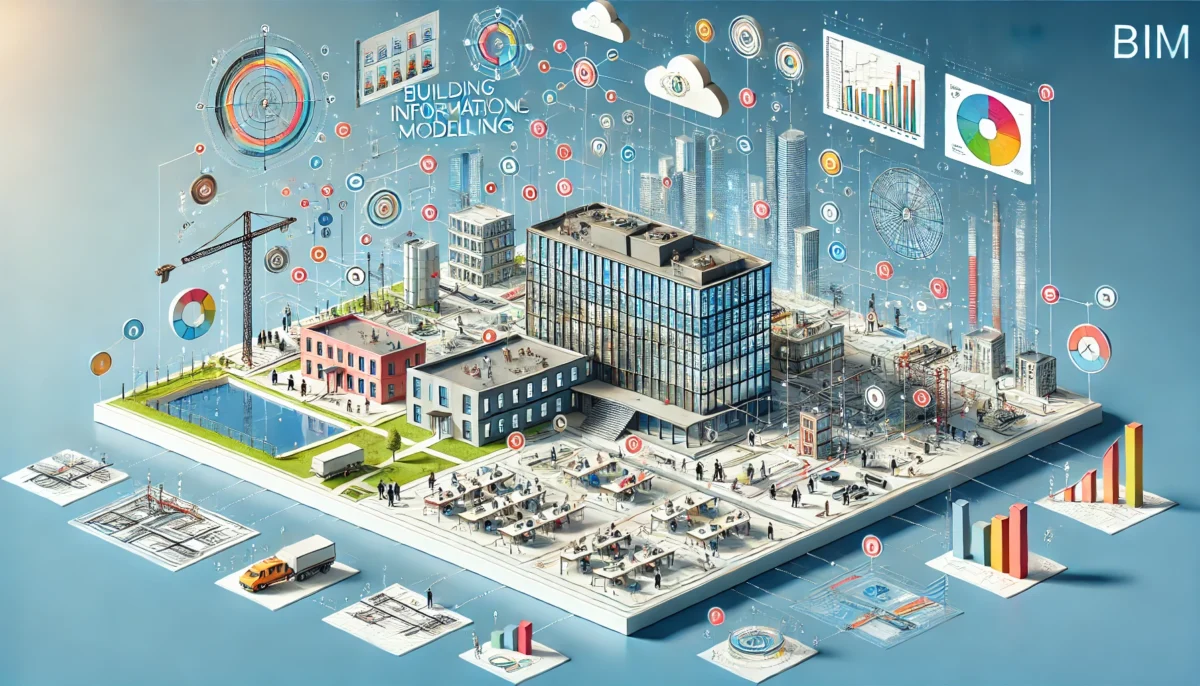As one of the world’s most dynamic cities, London is constantly evolving, with construction playing a critical role in its development. In recent years, innovative construction technologies have revolutionized how buildings and infrastructure are designed, built, and maintained. This post explores the impact of these technologies on urban development in London, highlighting key trends, statistics, and case studies.
The Rise of Innovative Construction Technologies
The construction industry has traditionally been slow to adopt new technologies, but this is rapidly changing. Several factors are driving this shift, including the need for increased efficiency, sustainability, and cost-effectiveness. Key technologies transforming the construction landscape in London include:
1. Building Information Modeling (BIM)
BIM is a digital representation of the physical and functional characteristics of a building. It enables better collaboration among stakeholders, reduces errors, and improves project outcomes.
According to a report by the National Building Specification (NBS), 73% of construction professionals in the UK are now using BIM.
2. Drones
Drones are used for site surveys, inspections, and monitoring construction progress. They provide high-resolution aerial images and data, improving accuracy and safety.
The global market for drones in construction is expected to reach $11.96 billion by 2027, growing at a CAGR of 15.4% from 2020.
3. 3D Printing
3D printing technology allows for the creation of complex building components with precision and speed. It reduces waste and lowers material costs.
The first 3D-printed building in the UK was completed in 2019, demonstrating the potential for this technology in urban construction.
4. Augmented Reality (AR) and Virtual Reality (VR)
AR and VR are used for design visualization, training, and safety simulations. They enhance decision-making and improve stakeholder engagement.
A survey by MarketsandMarkets predicts the AR and VR market in construction will grow from $1.06 billion in 2018 to $7.16 billion by 2023.
5. Robotics and Automation
Robots and automated systems are increasingly used for tasks such as bricklaying, concrete pouring, and demolition. They enhance productivity and reduce labour costs.
The adoption of robotics in construction is expected to grow at a CAGR of 16.8% from 2020 to 2027.
The Impact on Urban Development in London
Innovative construction technologies are reshaping London’s urban landscape in several ways:
Increased Efficiency and Productivity
Technologies like BIM and robotics streamline construction processes, reducing project timelines and costs. For instance, the use of robotic bricklayers can increase productivity by up to 400%.
According to the McKinsey Global Institute, the adoption of digital technologies could increase productivity in construction by 14-15%.
Enhanced Sustainability
Sustainable construction practices are gaining traction, driven by the need to reduce carbon emissions and environmental impact. Technologies such as 3D printing and drones help minimize waste and optimize resource use.
The UK government’s commitment to achieving net-zero carbon emissions by 2050 has accelerated the adoption of green construction technologies.
Improved Safety
AR, VR, and drones enhance safety by enabling remote inspections, real-time monitoring, and training simulations. This reduces the risk of accidents and improves compliance with safety regulations.
The use of drones for site inspections can reduce safety incidents by 55%, according to a study by PwC.
Better Quality and Precision
Technologies like BIM and 3D printing improve the accuracy and quality of construction, reducing errors and rework. This leads to higher-quality buildings and infrastructure.
The Royal Institute of British Architects (RIBA) reports that BIM can reduce construction errors by up to 75%.
Greater Collaboration and Transparency
Digital tools facilitate better communication and collaboration among project stakeholders, enhancing transparency and accountability. This leads to more informed decision-making and successful project outcomes.
A survey by the Chartered Institute of Building (CIOB) found that 70% of construction professionals believe that digital collaboration tools improve project delivery.
Case Studies
The Shard
The Shard, one of London’s most iconic skyscrapers, utilized BIM extensively during its construction. This enabled seamless collaboration among the international team of architects, engineers, and contractors, ensuring the project was completed on time and within budget.
Crossrail
Crossrail, Europe’s largest infrastructure project, employed a range of innovative technologies, including drones and AR. These technologies facilitated efficient project management and enhanced safety, contributing to the successful completion of key milestones.
Heatherwick Studio’s 3D-Printed Bridge
Heatherwick Studio is working on a project to construct the world’s first 3D-printed steel bridge in London. This groundbreaking project demonstrates the potential of 3D printing technology to revolutionize urban construction.
Future Trends
The construction industry in London is poised for further transformation as new technologies continue to emerge. Future trends to watch include:
Artificial Intelligence (AI)
AI will play a significant role in predictive analytics, optimizing project planning, and enhancing decision-making. AI-powered systems can analyze vast amounts of data to identify patterns and make recommendations.
Internet of Things (IoT)
IoT devices will provide real-time data on construction sites, improving monitoring and management. Smart sensors can track everything from equipment usage to environmental conditions, enabling proactive maintenance and efficient resource allocation.
Blockchain
Blockchain technology has the potential to enhance transparency and security in construction contracts and supply chains. It can reduce fraud, improve traceability, and streamline payment processes.
Modular Construction
Modular construction involves assembling building components off-site and transporting them to the construction site. This method reduces construction time and waste, and improves quality control.
Conclusion
Innovative construction technologies are driving significant changes in London’s urban development. By embracing these technologies, the construction industry can achieve greater efficiency, sustainability, and safety. As London continues to grow and evolve, these advancements will play a crucial role in shaping the city’s future.
For those in the construction industry, staying abreast of these trends and adopting new technologies will be essential to remain competitive and deliver successful projects. KHB Piling LTD is committed to leveraging these innovations to provide top-quality piling and foundation services in London.

My name is Kamil, and I specialise in piling services in London. I am dedicated to advancing KHB Piling LTD, a trusted contractor delivering high-quality foundation solutions for both residential and commercial projects. With the expertise and commitment of our team, we provide reliable piling services, including mini piling and CFA piling, tailored to meet the unique requirements of each client.

